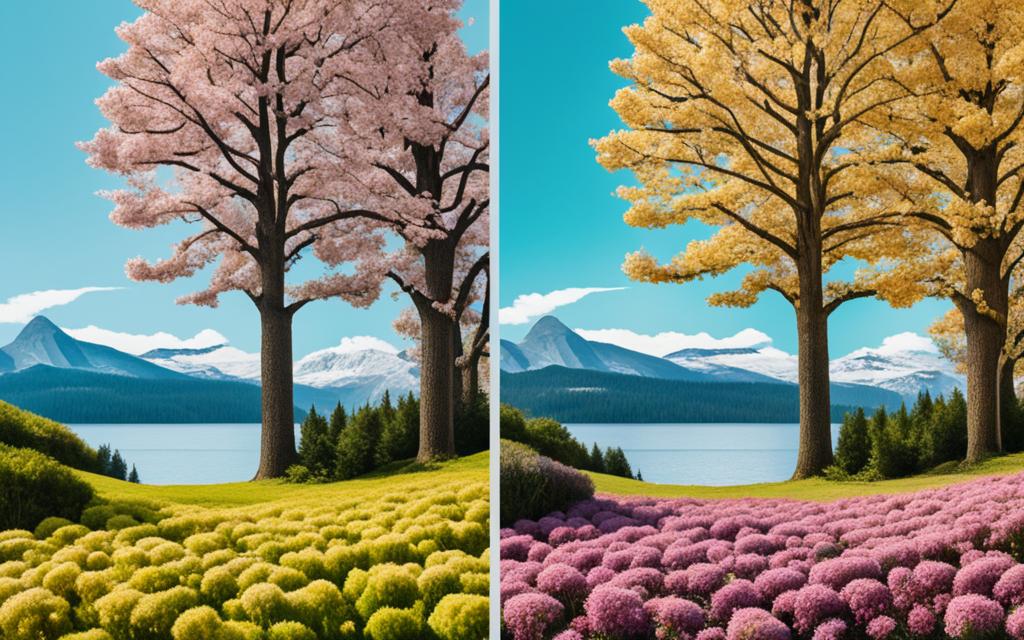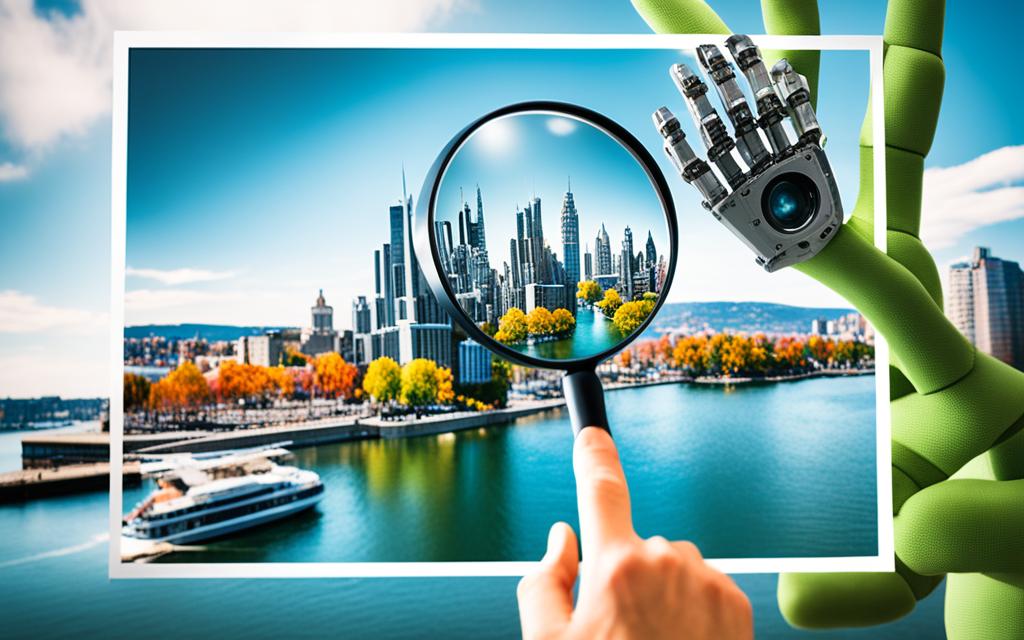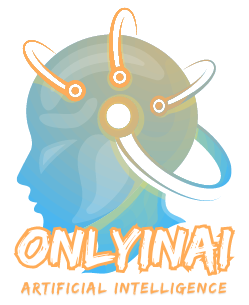In today’s fast-changing digital world, kids often see enhanced and fake content. This makes us wonder: Can they tell what’s real from what’s not? A study by Nexcess showed that even those who know a lot about AI can only guess if an image is real about half the time. This shows we really need to teach media literacy, especially to new users of the digital world.
Key Takeaways
- The growing prevalence of AI-generated content makes it increasingly difficult to distinguish real from artificial visuals.
- Even tech-savvy adults struggle to accurately identify AI-generated images, underscoring the need for media literacy education.
- Understanding the unique characteristics of AI-generated content is crucial for developing critical analysis skills.
- Analyzing image quality, source, and subject matter can help identify potential AI manipulation.
- Factors like age, gender, and familiarity with AI technology can influence one’s ability to recognize AI-generated images.
Introduction to AI-Generated Content
AI technology is getting better at making images that look real. But, can we really trust what we see? A study showed that even people who know a lot about AI can’t tell real images from fake ones half the time. This shows we need better education to tell real from fake content.
We’re going to explore AI-generated content and how to spot the difference. By learning about language models, perplexity scores, and coherence evaluation, we can become better at checking what we see.
Assessing AI-Generated Images
There are several ways to tell if an image is made by AI. Here are some important points:
- Familiarity with AI technology – Knowing about AI helps people tell real from fake images better.
- Age and gender – Young people and those interested in AI often do better at spotting fake images.
- Perplexity scores and coherence evaluation – These tools can help us understand if an image is real or made by AI.
By considering these factors, we can better understand the world of AI-generated images. This helps us navigate the changing landscape with more confidence.
The Real vs AI Images Quiz
AI image generators have learned from many real images and can now make very realistic pictures. Your task is to tell the AI-made images from the real ones. The quiz covers many topics, like wildlife, history, people, and more. It tests your ability to look closely, think deeply, and make smart choices.
This quiz will challenge your skills in spotting real from AI-generated images. You’ll learn to check perplexity scores and coherence evaluation. You’ll also get better at using readability metrics to tell real from fake in the digital world.
- Can you identify the real image of a majestic African elephant in its natural habitat?
- Is that a lifelike portrait of Abraham Lincoln or an AI-created rendition?
- Does the image of the Eiffel Tower at sunset capture a genuine moment, or is it a sophisticated digital simulation?
- Can you spot the real image of the Northern Lights dancing across the night sky?
- Is that a photograph of the iconic Statue of Liberty or an AI-generated cityscape?
Get ready to test your skills in spotting real from AI-made images. You might be surprised by the answers and how they challenge what you thought you knew about digital images.
| Image Category | Real or AI-Generated | Explanation |
|---|---|---|
| African Elephant | Real | The image captures the natural texture, lighting, and subtle details that are difficult for AI to replicate accurately. |
| Abraham Lincoln Portrait | AI-Generated | While lifelike, the portrait lacks the nuanced facial expressions and unique characteristics of a real photograph. |
| Eiffel Tower at Sunset | Real | The dynamic lighting, shadows, and atmospheric perspective are hallmarks of a genuine photograph. |
| Northern Lights | Real | The fluid, ethereal movement and vibrant colors of the Aurora Borealis are difficult for AI to replicate convincingly. |
| Statue of Liberty | AI-Generated | While the cityscape appears realistic, the lack of specific architectural details and environmental cues suggests an AI-created image. |
Evaluating Images: A Critical Approach
Identifying whether an image is real or AI-generated requires a careful look. Start by checking the image’s message, subject(s), quality, and source. This helps you tell real from AI-made content and make smart choices.
Key Questions to Consider
- What is the overall message or meaning conveyed by the image? Think about the image’s purpose and the story it tells.
- What are the key subject(s) or elements depicted? Notice the details and how they are arranged in the image.
- How does the image quality compare to what you’d expect from a real photo or artwork? Look for stylistic inconsistencies or lack of specific details that might show it’s AI-made.
- Where does the image appear to have originated from? Check the source and look for factual errors that could point to AI creation.
Thinking about these key questions helps you spot real images from AI-made ones. This skill is useful in today’s world of images. It lets you make smart choices about what you see.
| Criteria | Real Image | AI-Generated Image |
|---|---|---|
| Attention to Detail | High level of detail and realism | May lack specific details or have stylistic inconsistencies |
| Consistency | Consistent lighting, textures, and proportions | Potential factual errors or lack of specific details |
| Source Credibility | Verified, reputable source | Unclear or questionable source |
Using this critical approach, you’ll get better at telling real from AI images. This helps you make smart choices about the content you see.
Key Factors in Identifying AI-Generated Images

It’s hard to tell real images from those made by AI. Knowing about AI technology is key. People who understand language model analysis, perplexity scores, and coherence evaluation are better at spotting AI images.
Age matters too. Young people, especially those in Generation Z, are better at telling AI images apart. They’re more used to new tech, which helps them.
Being interested in AI also helps. Those who keep up with AI news and terms can spot AI images easier. They do better than those who don’t know much about AI.
Gender also affects how well people can tell AI images from real ones. Men might be a bit better at spotting AI photos. But women are better at noticing the human touch in AI music and sounds.
In short, knowing about AI, being young, interested in AI, and seeing things from a gender perspective all play a part. These factors help us tell real from AI images. They also help us improve our media literacy and critical thinking in the AI age.
Top ways to distinguish real from AI generated
AI technology is getting better, making it harder to tell real from fake content. But, there are signs that can help you spot the difference. Here are the top ways to tell real from AI-generated content:
- Inconsistent Textures and Patterns: AI images often have small but noticeable flaws in textures and patterns. This can be spotted by those who know what to look for.
- Unnatural Proportions: AI images might not get the size and scale of things right. This can cause slight distortions that show it’s not real.
- Lack of Subtle Details: AI can make detailed images, but it still misses the small, complex details real photos or drawings have.
- Repetitive or Artificial Backgrounds: AI images might have backgrounds that look too perfect or repetitive. Real places don’t look like that.
- Unnatural Lighting and Shadows: AI has trouble with light and shadows in real scenes. This can lead to small inconsistencies.
There are more ways to tell real from AI-generated content too:
- Inconsistent Text Artifacts: AI text can have odd font styles or spacing. A close look can reveal these mistakes.
- Lack of Contextual Awareness: AI content might not get the full story or context right. This can make it seem off or out of place.
- Repetitive or Predictable Patterns: AI text can be too predictable or repetitive. Real human writing is usually more varied.
- Originality and Creativity: AI can try to be original, but it might not have the same spark as human-made content.
- Provenance and Verification: The best way to check if content is real is to verify its source. Use trusted sources to confirm its authenticity.
Remember these tips to improve your ability to spot the difference between real and AI-generated content. This will help you navigate the changing world of digital media with more confidence.
| Distinguishing Factor | Real Content | AI-Generated Content |
|---|---|---|
| Textures and Patterns | Natural, organic, and varied | Subtle imperfections and irregularities |
| Proportions | Accurate and natural | Slightly distorted or unnatural |
| Subtle Details | Intricate and nuanced | May lack some subtle nuances |
| Backgrounds | Varied and natural | Potentially repetitive or artificial |
| Lighting and Shadows | Realistic and complex | May exhibit subtle inconsistencies |
Analyzing Specific Image Categories

Looking closer at how to tell real from AI-made images, we see some types are harder than others. Cityscapes and natural wonders often blur the line between real and fake.
Cityscapes and Night Scenes
Cityscapes challenge AI with their complex mix of buildings and lights. It’s hard to tell if the images are real or made by AI. Night scenes add to the challenge with their use of light and shadow.
Natural Phenomena
Natural scenes like the Aurora Borealis or cloud formations are tricky. AI can copy their vibrant colors and details well. This makes it hard to know what’s real and what’s not.
Rare and Unfamiliar Animals
Images of rare animals can be tricky because we might not know what they look like. Without a clear idea of what they should look like, it’s hard to spot AI-made images. The lack of familiar details also makes it harder.
Historical Artifacts and Influential Events
Images of historical artifacts and events are also challenging. AI must capture the look and feel of the past accurately. Telling a real historical photo from an AI-made one can be tough.
| Image Category | Challenges in Identifying AI-Generated Content |
|---|---|
| Cityscapes and Night Scenes | AI’s ability to render detailed, realistic-looking urban environments and lighting can make it difficult to differentiate from the real thing. |
| Natural Phenomena | The vibrant colors and intricate details of natural wonders like the Aurora Borealis can be meticulously replicated by AI, creating a convincing illusion. |
| Rare and Unfamiliar Animals | Lack of direct experience with these creatures can make it challenging to spot stylistic inconsistencies or factual errors in AI-generated images. |
| Historical Artifacts and Influential Events | AI systems must accurately replicate both visual details and nuanced stylistic inconsistencies to create authentic-looking historical images. |
The Role of AI in Image Manipulation
AI technology is getting better at making images and changing old photos. It can change faces, age, gender, and more, making it hard to tell what’s real and what’s not. This makes it tough to know the difference between real and AI-made content.
Some photos might look real but have been touched up by AI. This skill to change photos, along with making new ones, challenges us to spot AI-generated content. It’s important for top ways to distinguish real from ai generated content and understanding media.
Recognizing AI-Manipulated Imagery
To beat AI in image changes, we need to get better at spotting text artifacts and pattern detection. By looking closely at details and finding small differences, we can tell real photos from AI-altered ones.
- Notice the quality and consistency of textures, lighting, and shadows.
- Watch for oddities or unnatural changes in faces or other parts of the image.
- Be cautious of photos that seem too perfect, lacking the real flaws that genuine photos usually have.
As AI gets better at changing images, staying alert and critical is key. It helps us keep up with media literacy and spotting AI in a digital world.
Ethical Considerations and Media Literacy
The rise of AI-generated and manipulated content brings up big ethical worries. These include the spread of false info, privacy issues, and losing trust in digital media. As an educator, I aim to teach students how to spot fake news and protect their privacy. This means teaching them to question what they see, hear, and read online.
It’s crucial to teach students to think deeply, analyze visuals, and know how AI works. This way, they can spot fake or made-up content and make smart choices about what to believe. I focus on the top ways to tell real from AI-made images. I also show them how AI can lead to factual errors and a lack of specific details. With these skills, students can be more careful online, stopping the spread of false info and keeping their info safe.
By giving students these skills, I help them be ready for the complex digital world ahead. This is key for their growth, making good choices, and helping our society too.


